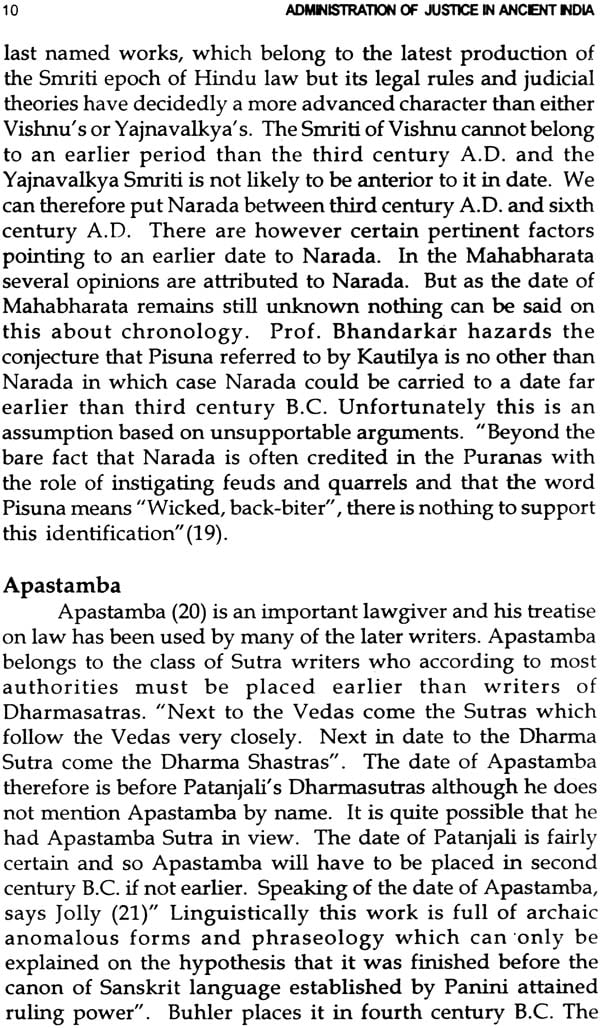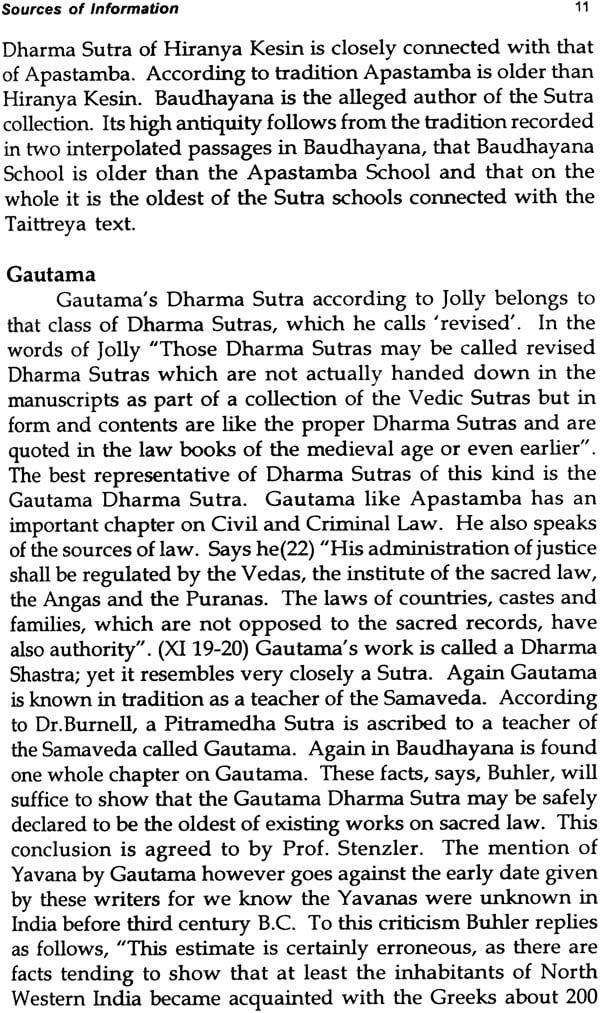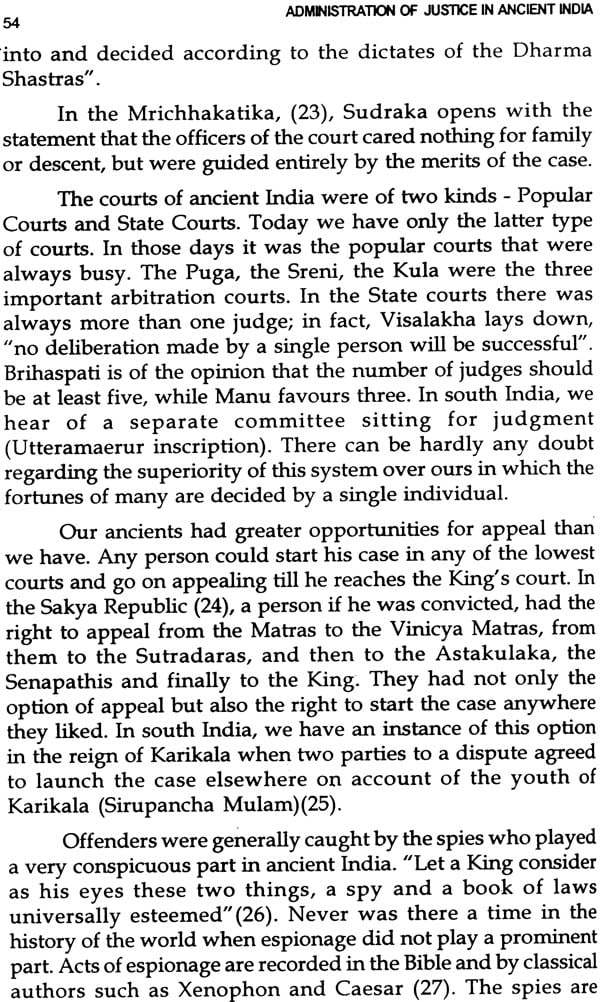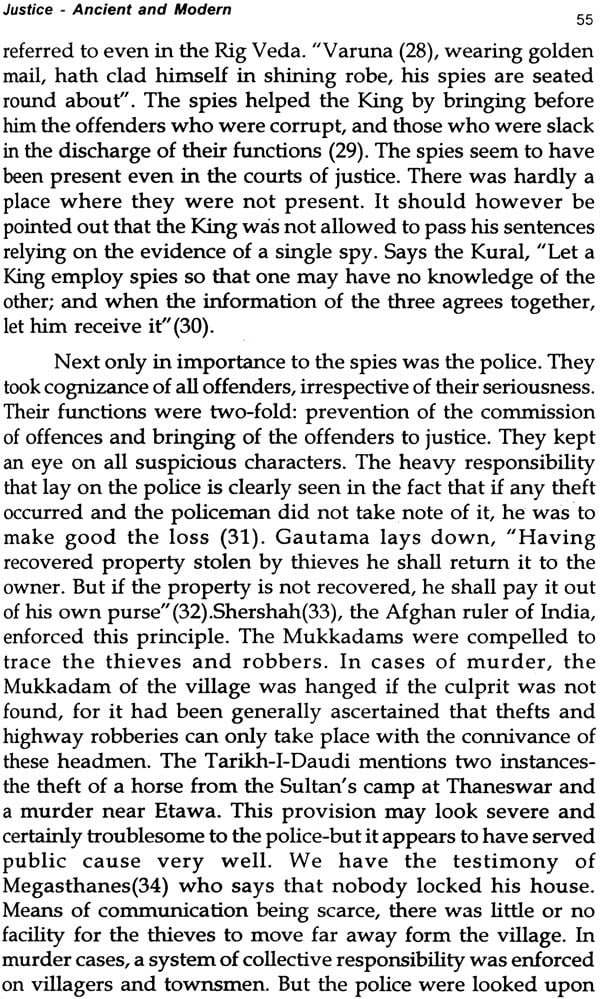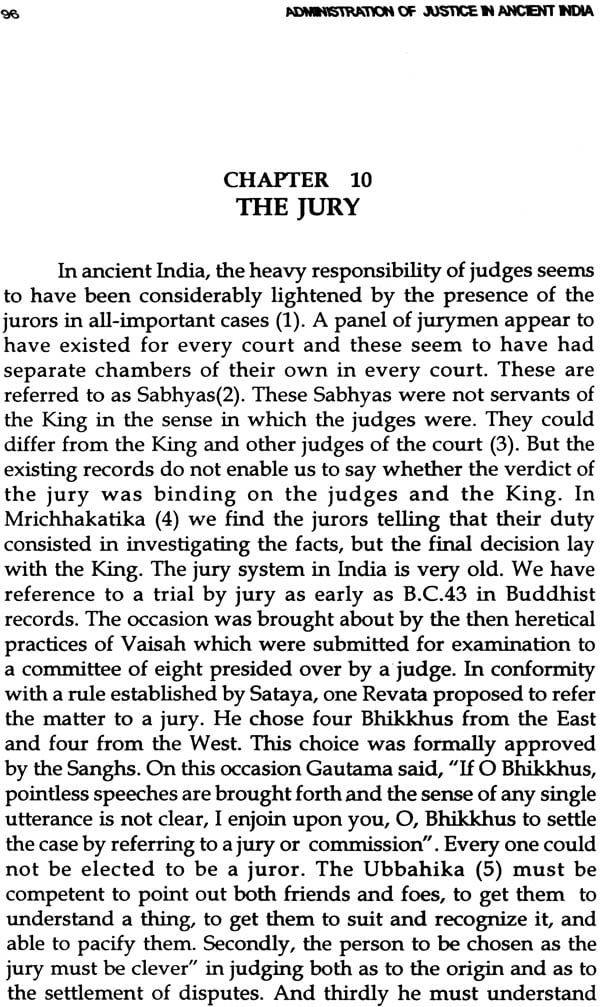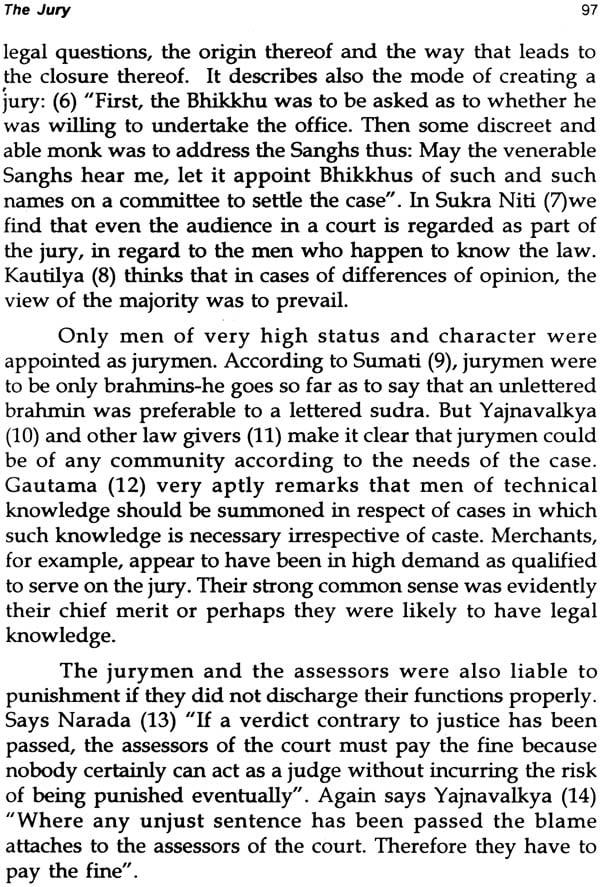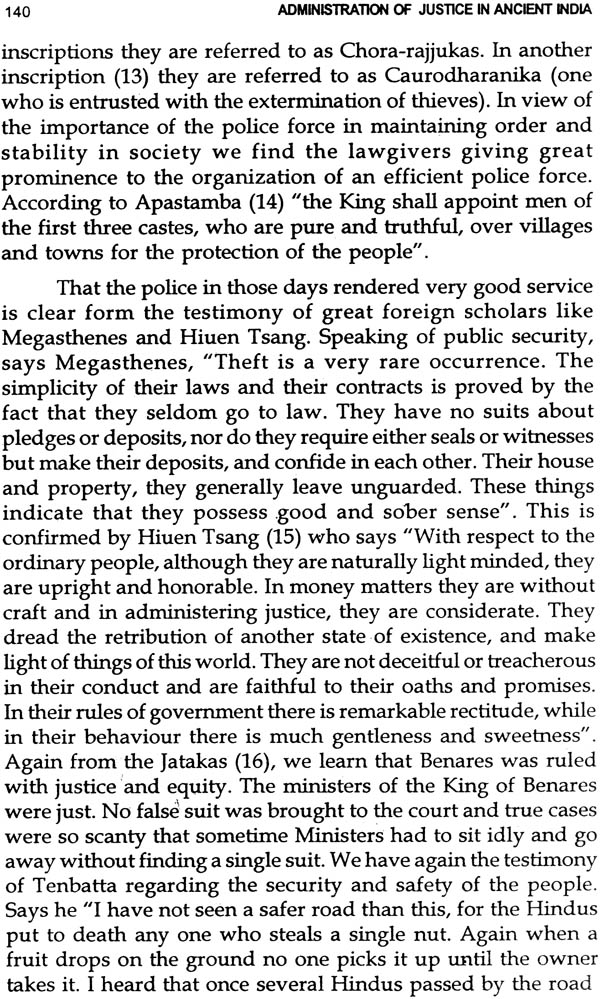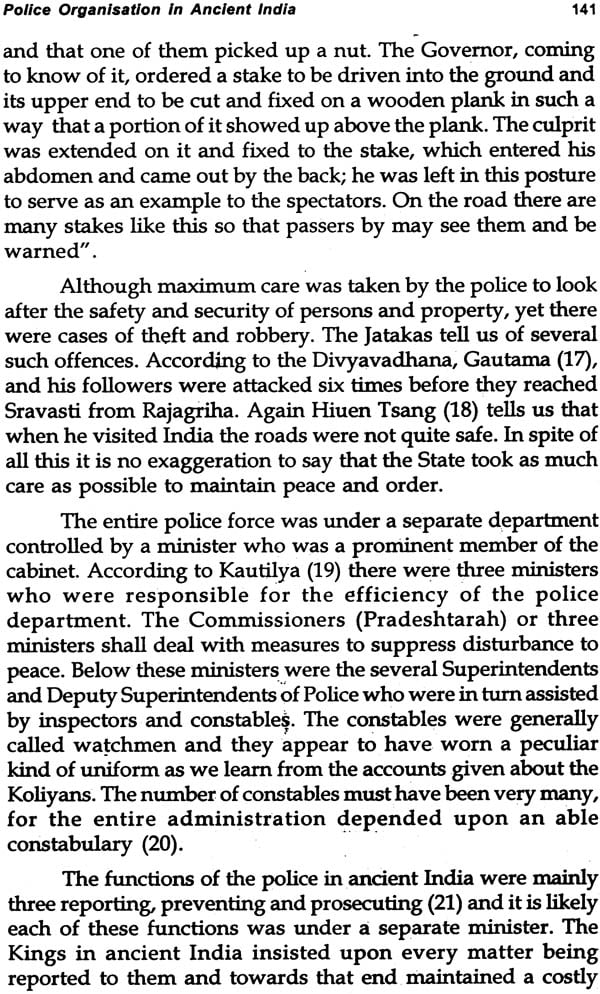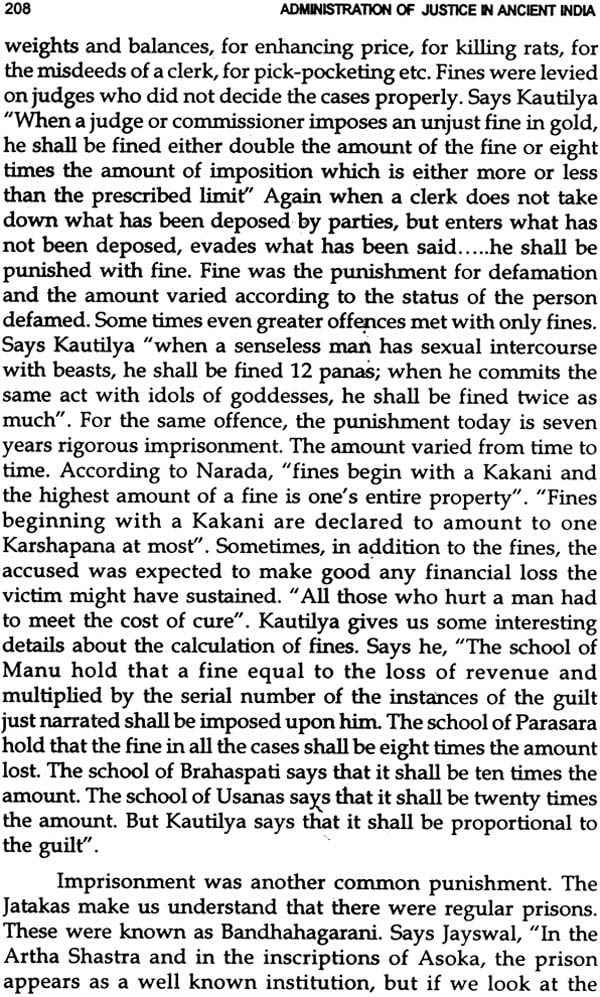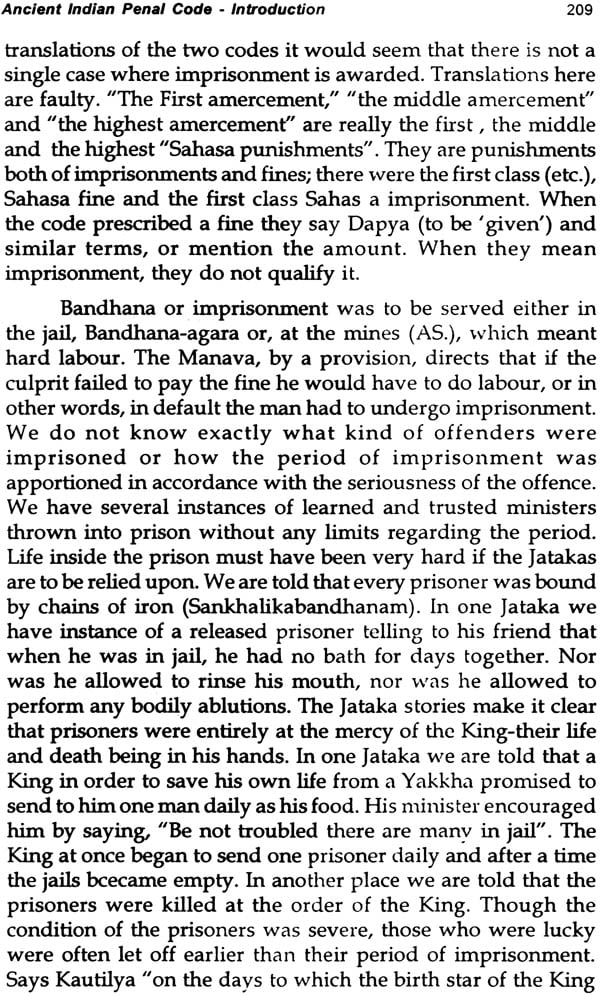
Administration of Justice In Ancient India
Book Specification
| Item Code: | IDK736 |
| Author: | K. Srikantan |
| Publisher: | Bharatiya Vidya Bhavan |
| Edition: | 2007 |
| ISBN: | 8172763638 |
| Pages: | 223 |
| Cover: | Paperback |
| Other Details | 8.5" X 5.5" |
Book Description
The late K. Srikantan was born from a village called Kadathur in present day Tamilnadu. His parents were Sanskrit scholars and deeply entrenched in the traditional way of life. The family later moved to Nanjangud, where his father joined the legal profession.
Sri Srikantan while studying at Mysore University came to the attention of the Register of the University who was respected for his scholarship in Indian Philosophy. This resulted in his marriage to the Registrar's daughter, Smt. Saraswathi
Sri. Srikantan started career as a professor of a economics in Maduai and later at Lingaraj Collage, Belgaum. In both places he published books and articles. During the early forties, Sir Mirza Ismail brought him to Mysore to becomes the Assistant Director of Industries, designing and implementing new ways to market the Chennapatna toys, was his main contribution to the development of rural industries. He later become the Director of Industries and Textile commissioner in Indore was a decadent and backward State in the forties, dotted with many textile mils owned by Marwadi business men. He managed to deal with all the intricacies of dealing with the mil owners and brought Indore to the mainstream of the India states in a short period of time. The books he published during his term in Indore are still considered key texts in the development of local industries.
This book is an edited version of Prof. Srikantan's published dissertation (which he had written in the late 1930s) for a Ph.D The manuscript was retrieved recently by his daughter Mrs. Leela Gulati. It is a scholarly work on the practices and administration of justice in ancient india.
I read with deep interest and admiration Prof. K. Srikantan's book entitled "Administration of Justice in Ancient India." It beams with original and yet reliable information and sources of law and their chronology, law and Equity, kings court and people's court, trial by jury, representation of parties by experts, public opinion and espionage, crime and severity of penal code and other problems of Legal Administration in Ancient india many of which are hardly dreamt of by modern writers on Indian Law. The volume speaks for itself.
The Gulatis were on the Faculty of the centre for Development Studies here- Prof. I.S. Gulati as an Economist and Smt. Leela Gulati as a sociologist and had settled down at Thiruvananthapuram. They have been our family friends for over two decades. It was some five years ago that Leela Gulati brought the manuscript of a thesis on the Administration of Justice in ancient India by her late father Prof .K. Srikantan and asked me to go through it and suggest what could be done with it.
On careful study I found it to be a scholarly work on a very important subject. There was a foreword a foreword by the legendary Shama Shastry of Mysore dated October 4, 1940. it appears that is was a draft Ph.D. thesis written in late 1930s, but the process of getting the degree and publishing it seems to have got stopped because Prof Srikantan took ill and died at a very early age. As the note by Smt. Leela Gulati says, the text was found and handed over to her only in 1999 by a cousin of hers who continued to reside in Bangalore.
In the late nineteenth and early twentieth century the scions of traditional upper caste families took to English education and to modern vocations like law, teaching in English schools and collages, as well as government service. As a generation in transition, they had the advantage of good grounding in Sanskrit and English. Those in modern vocations wrote and spoke on ancient texts many of which were being rediscovered. Many illustrious names come to our minds. Prof. Srikantan belonged to that generation. Through he was a lecturer in economics and later joined the state service in Mysore he wrote extensively in journals and magazines on ancient administrative and judicial systems. The presents text is Prof. Srikantan 's final work on this subject a work undertaken on the sidelines of a busy life as a lecturer and government servant and during years of failing health. Such lives and their works have more than one lesson for the present generation.
The script had a very large number of quotations and citations. They had to be correlated with the references. This took considerable time and effort and I have done it to the best of my knowledge and ability. There were repetitions in different chapters which had to be removed and some editing of the text had to be made. I learnt a great deal during the process of editing this great work. Bharatiya Vidya Bhavan which has brought out a number of excellent publication in ancient Indian thought and practice was the natural choice for publishing this work. The process o typing the edited draft getting approval of the editorial committee and printing took some time. It is now ready for publication. It is yet another worthy addition to a long list of scholarly publications by the Bhavan.
I am grateful to Sri G. Gopakumar, associate Secetary of Thiruvananthapuram Kendra for valuable help in the difficult task of reading the proof more than once.
I cannot tell you how delighted I was when given this manuscript as a gift, when given a few years ago. My cousin handed me the book saying that it was a very special gift. I had no idea what it was, and was thrilled to find that it was my father's unpublished Ph.D thesis, that he had written in the early thirties. My father passed away when my siblings and I were young to cape with the problem of losing the breadwinner, we had no time to look back on his possible scholarly achievement.
To find a copy of his dissertation after nearly three decades was a shock. I had no idea that he was enrolled in a Ph.D programme, and written an submitted his thesis to the Mysore University. Dr. K Ramiah had carefully preserved his dissertation in his library collection that was handed down hto hi son upon his demise
My father came a family of Dikhitars from a village called Kadathur. This is one of the five "K" villages of Tamil Brahmins. My grand parents were Sanskrit Scholars, and entrenched in the traditional ways of life and tradition. My father's family had moved to a village in Nanjangud, famous for its Viswanath Temple, made more famous by Tipu Sultan, the small Nanjangud bananas, and B.V. Pandit's both tooth powder. My grand father was a lawyer in this small town and the villages. They were not prosperous, but educating their sons was of importance. While my father was studying at Mysore University, he came to the attention of my mother's father who was Registrar of the University. My mother's father was specialist in Indian philosophy and was also a teacher to the then Maharaja of Mysore and to the Swamis of Ramakrishna Mission.
Even though my father was supposedly bright and well read, it was still difficult to secure good jobs. My father started his carrier as a Professor of economics in Madurai and later shifted to Lingaraj Collage in Belgaum. During the early forties Sir Mirza Ismail through him to Mysore to become the Assistant Director of Industries. Designing and implementing new ways to market the Chennapatana toys was one of my father's main contributions to the development of rural industries. From here, he went on to become the Director of Industries and Textile Commissioner in Indore. Indore was decadent and backward state in the forties, dotted with textile mills. The books he published during his term in Indore are still considered texts in the development of local industries. Unfortunately he succumbed to illness at the age of forty-four, leaving behind his wife and four children.
It means a tremendous amount to me to have the opportunity to publish and share this peace of work. I am extremely grateful to Sri. V. Ramachandran for his support gratitude to him. But his perseverance and hard work this also to acknowledge Ms. Lakshmi Nayar for her assistance in working on the manuscript and references.
It means a tremendous amount to me to have the opportunity to publish and share this peace of work. I am extremely grateful to Sri. V. Ramachandran form his support gratitude to him. But for his perseverance and hard work this book would have never seen the light of the day. I would like also to acknowledge Ms. Lakshmi for her assistance working on the manuscript and references.
| Foreword | i | |
| Editor's Note | ii | |
| Preface | iv | |
| Chapter | ||
| 1 | Sources of information | 1 |
| 2 | The Artha Shastra: Kautilya | 14 |
| 3 | Miscellaneous Sources | 36 |
| 4 | Sources of Law | 45 |
| 5 | Justice: Ancient and Modern | 51 |
| 6 | Courts of Justice in Ancient India | 60 |
| 7 | The state Courts | 69 |
| 8 | The Popular Courts | 78 |
| 9 | The Judges | 88 |
| 10 | The Jury | 96 |
| 11 | Some Cases | 99 |
| 12 | Law of Evidence: Ordeals | 107 |
| 13 | Law of Evidence: Document | 119 |
| 14 | Law of Evidence: Witnesses | 125 |
| 15 | Law of Evidence: Oaths | 133 |
| 16 | Police Organisation in Ancient india | 138 |
| 17 | Police Organisation: Prevention of Crimes | 144 |
| 18 | Police Organisation: Prosecution | 150 |
| 19 | police Organisation: The Right of private Defence | 157 |
| 20 | police Organisation: Detective Police | 163 |
| 21 | Trial and Judgement | 171 |
| 22 | Lawyers in Ancient India | 186 |
| 23 | Ancient Indian Penal code: Introduction | 191 |
| 24 | Ancient Indian Penal Code: A Review | 211 |
| Bibliography |
